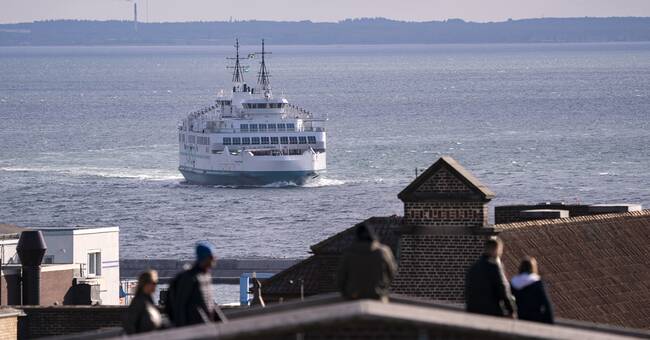In 2018, the Swedish Transport Administration and the Danish sister organization Vejdirektoratet were commissioned to investigate an imaginary Sundstunnel for passenger trains and cars.
On Thursday, the results were presented.
The investigators did not express opinions on whether the Sundstunnel is a good idea or not.
Instead, the press conference was about numbers.
There will be four tunnels in total.
The train tunnels will be 7.5 kilometers long and then another 6 kilometers will be added for various connections on the mainland.
The car tunnels will be 11 kilometers long plus a few more kilometers for the connections.
Both Helsingborg and Helsingör must build their railway stations.
Here is an example of how the two tunnels could be located.
Photo: SVT Design
Uncertainties regarding the financing
The entire project would cost SEK 57.3 billion, with the bill for the car tunnels accounting for just over half of the sum.
But the final funding is still unresolved.
It is intended that those who use the tunnels will pay fees that will give the money back in 40 years.
That calculation does not add up, according to a report published by the authorities.
Namely, train traffic is not forecast to generate sufficiently large revenues to cover the costs of the railway - at the same time as the profit from road traffic is not large enough to compensate for it.
- What we have managed to capture in monetary terms shows a negative benefit, says the Swedish Transport Administration's regional director for region south Lennart Andersson.
- But then we know that there are many parameters that we will never be able to capture in these socio-economic calculations and which must be based on political consideration: What do you want to achieve for societal development?
The coastal path can become a bottleneck
The reason why the railway is not predicted to be profitable is that the Danish Coastal Line, with which the railway would be connected, already has limited capacity.
- We are guided by the number of trains that the Coastal Line can receive, says the Swedish Transport Administration's project manager Peter Bernström.
The investigators had also reviewed the climate impact and estimate that the increased car traffic that the tunnel is expected to bring with it will correspond to 40,000 tonnes of carbon dioxide per year.
Now it is the politicians who have the ball.
If they think that they should continue to investigate locations, environmental consequences and technical solutions, it will take about 15 years before everything is ready.

